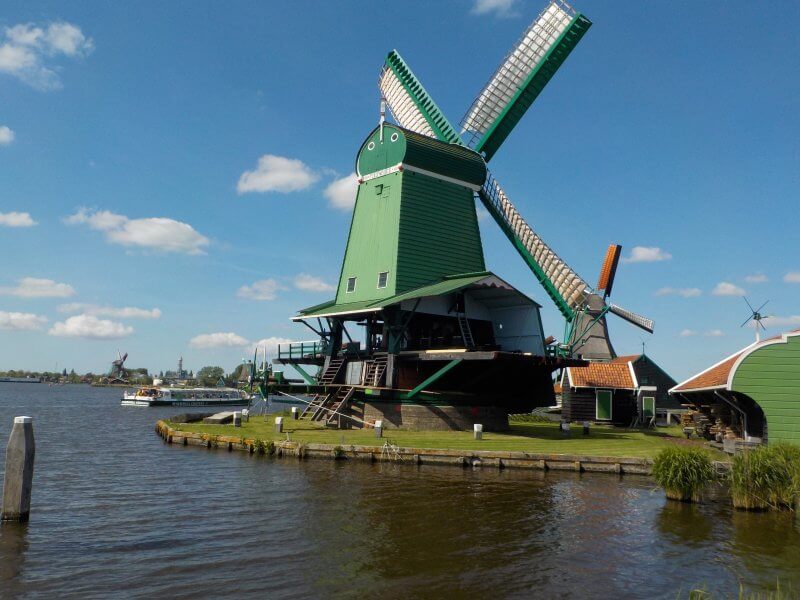
Located on the east bank of the Zaan River, just north of the small city of Zaandam lies the traditional Dutch village of Zaanse Schans.
If you were ever keen to find one place that encompasses so many great icons the Netherlands is famous for in such a lovely, natural and historical setting, then Zaanse Schans is where I would recommend you visit.
We are talking about windmills on the river, Dutch riverboats, traditional clogs, gouda, edam, and other cheeses, green-painted houses, and crafts. Even the famous Dutch tulips are grown in this area, although not to the same scale as the region around Keukenhof. Nevertheless, the natural beauty in and around Zaanse Schans on the Zaan River is so pretty and you can just imagine what it would have been like living here a couple of centuries ago.
The Zaan River and its windmills
Situated in the province of North Holland, within the Zaan District, the Zaan River only runs for some 14 km from its source around Starnmeer to its mouth at the North Sea Canal.
History tells us that people have been living along the banks of the Zaan River as early as the year 1000. The Zaan River is also quite famous for its part in the industrial revolution with more than 1000 windmills built along the river during the 17th century to process grain, spices, wood, oil and paint. This area also had large shipyards where there was good access to the largest port in the world at that time, Amsterdam. Even though the Zaan Region is considered one of the oldest surviving industrial areas in the world, you really couldn’t tell this from how lovely the river and the land around here looks today.
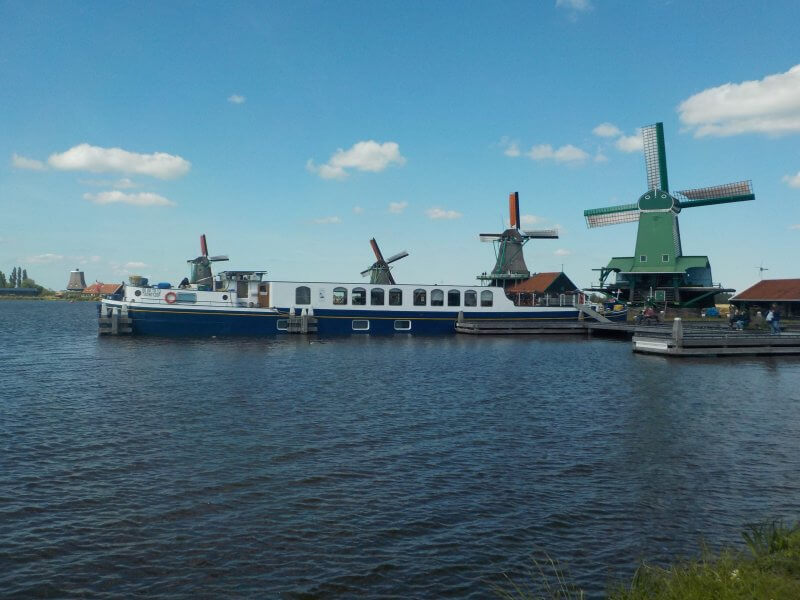
From the time of the Dutch Golden Age to now, there are still dozens of windmills that exist along the Zaan River, although there are only 8 that are still operating in Zaanse Schans which you can visit. These were built after 1574 and are:
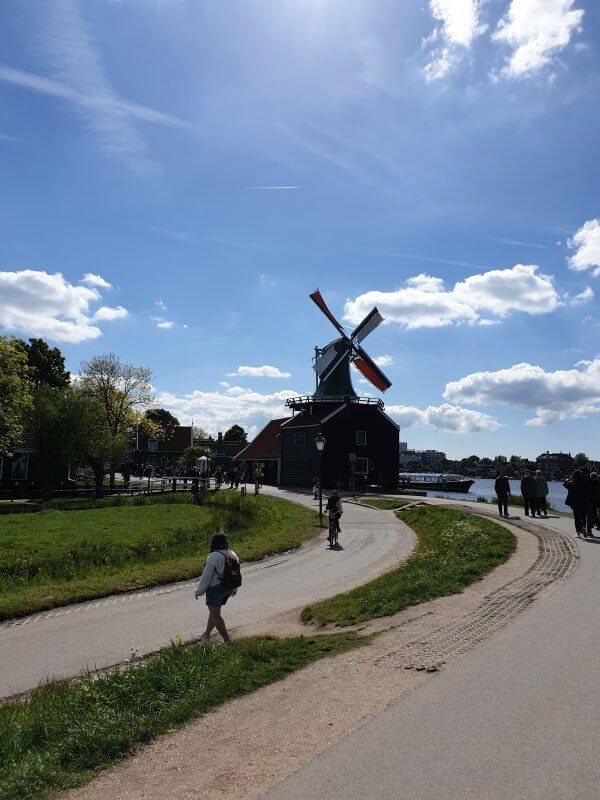
De Huisman (The Houseman), a mustard mill
De Gekroonde Poelenburg (The Crowned Poelenburg), a sawmill
De Kat (The Cat), a dyemill
Het Jonge Schaap (The Young Sheep), a sawmill
De Os (The Ox), an oilmill
De Zoeker (The Seeker), an oilmill
Het Klaverblad (The Cloverleaf), a sawmill
De Bonte Hen (The Spotted Hen), an oil mill
Visits to the windmills cost €5 each or €2.50 for children 6-12. You will find traditional craftsmen at work and be able to see how they create their products.
A number of towns/villages along the Zaan River are actually named after the river itself including Koog aan de Zaan, Westzaan, Oostzaan, Zaandijk, the city of Zaandam and of course the village of Zaanse Schans.
Arriving at Zaanse Schans
The village of Zaanse Schans is described as a conservation area and open-air museum with Dutch windmills and Zaan houses, together with working mills, workshops, and manufacturing of traditional foods and crafts that continue to this day.
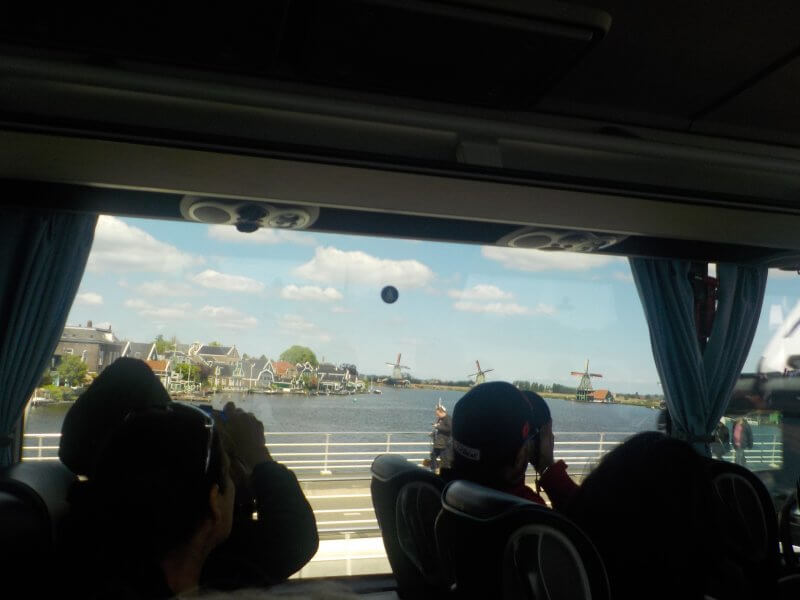
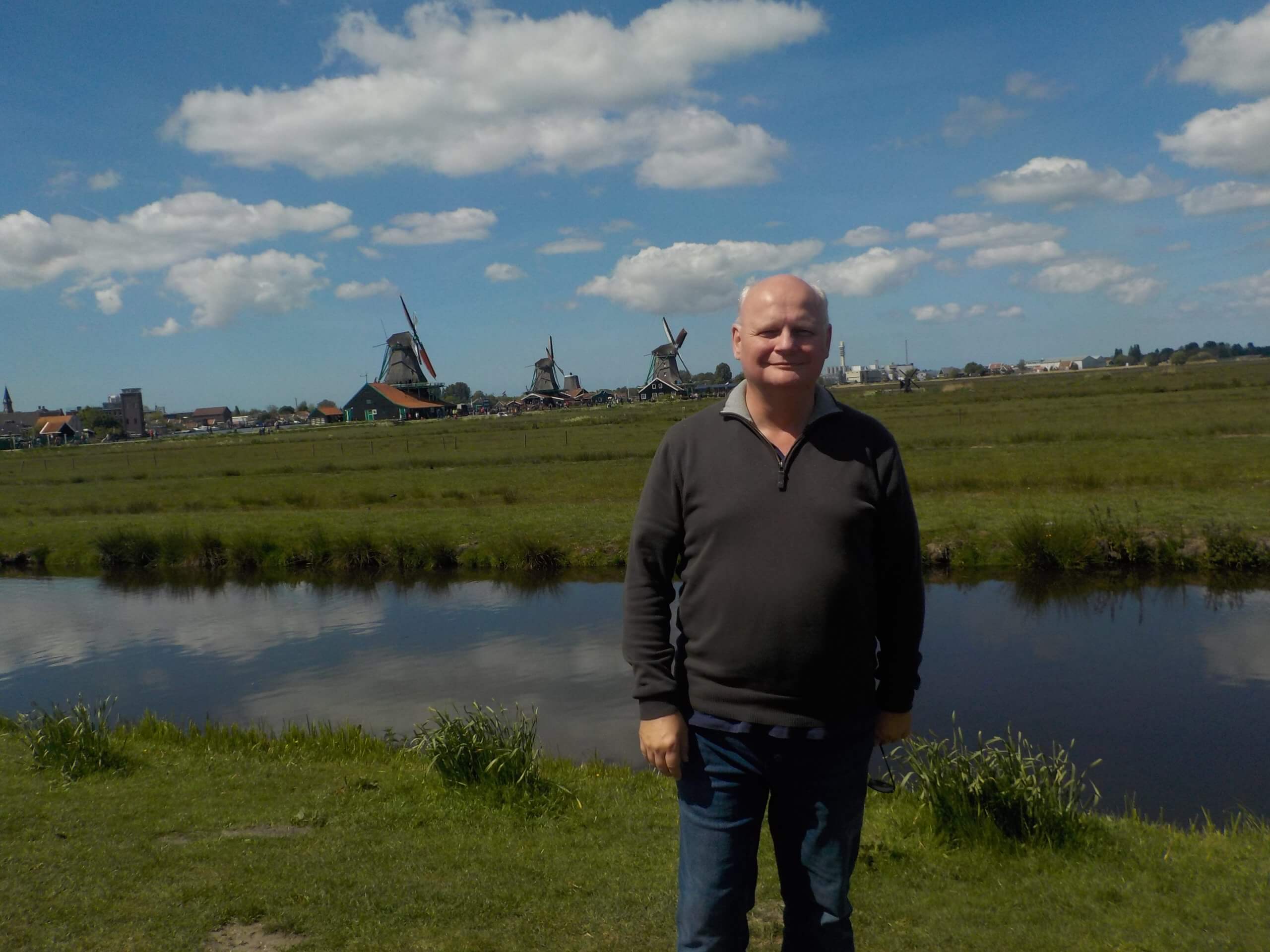
While it has certainly developed over recent years to become a significant tourist destination, Zaanse Schans still manages to allow visitors a genuine glimpse into their traditional trades of producing clogs, cheese, weaving, chocolate, craft making, grounding spices, and oil with their mills.
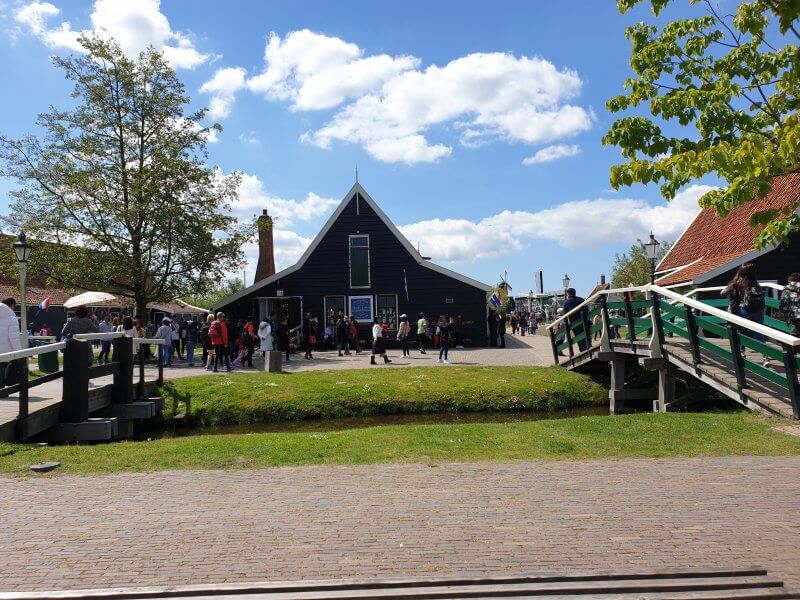
It is quite impressive how well these activities have been continued within their original buildings which have been well preserved over a couple of centuries. The other thing worth noting is that the day we went, it wasn’t overly crowded with tourists and it was easy to explore the village and the Zaan River at your own pace and stop into the various trade centers to watch tradespeople practice their craft. There were still lots of visitors but as the village and general area occupy a large site, it doesn’t feel like there are people everywhere.
Below are the main highlights James and I enjoyed while we wandered around.
Clog Making
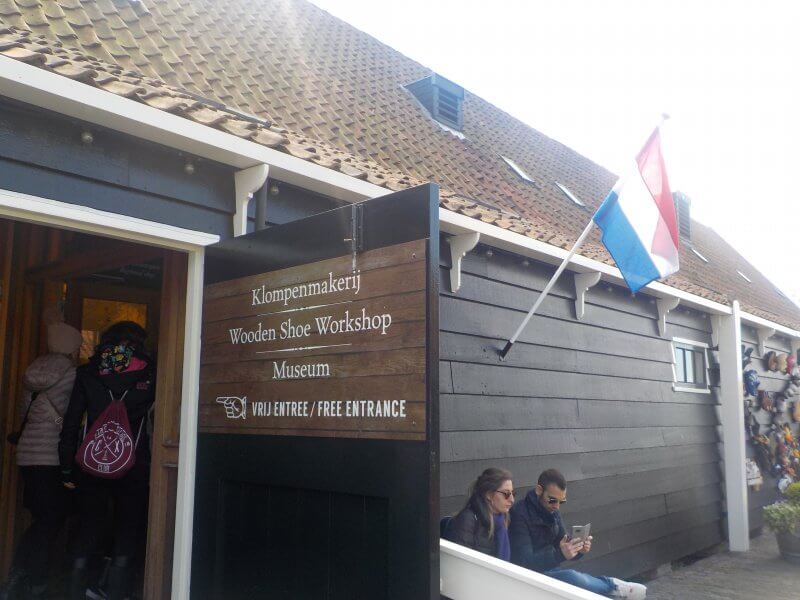
Entering the building where clogs are made proved to be an interesting experience. These days most clogs are made for the tourist market although some Dutch people, including some at Zaanse Schans, wore them with pride as they went about their daily work.
Traditionally, skilled artisans made clogs by hand and could produce up to seven pairs each day. Today, clogs are made by machines, but clog makers still do make them by hand at the Clog Workshop.
Here we saw how clogs were made as well as seeing the finished product displayed for sale in their shop.
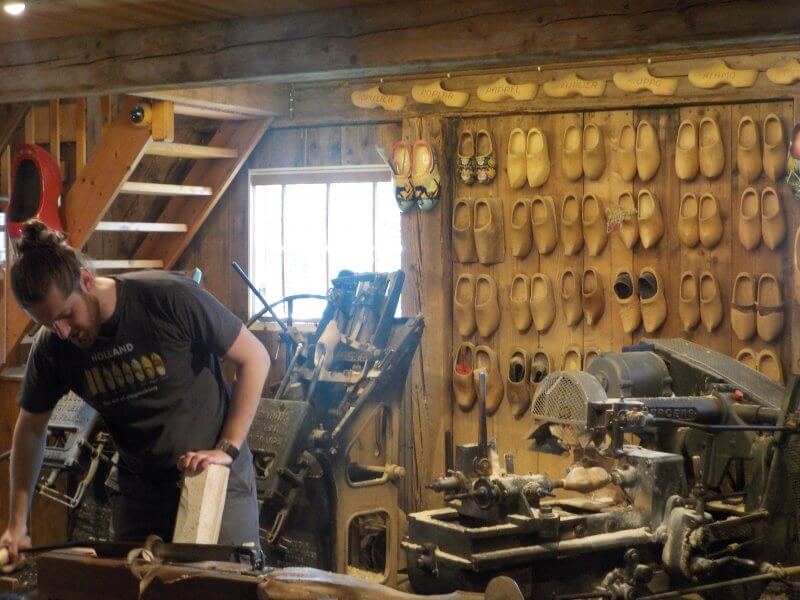
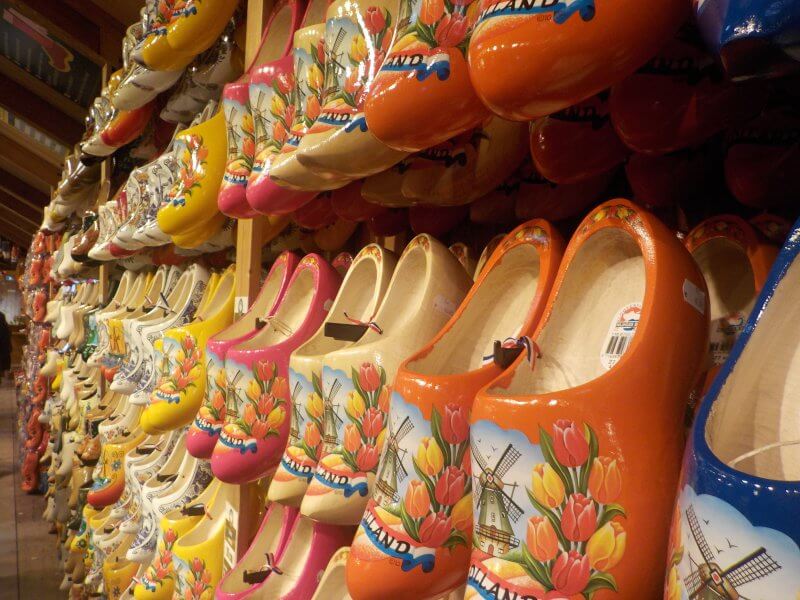
Cheese Making
Having the traditional Dutch cheese-making process of their famous Gouda and Edam explained, followed by a tasting of a number of different varieties was another enjoyable part of the village.
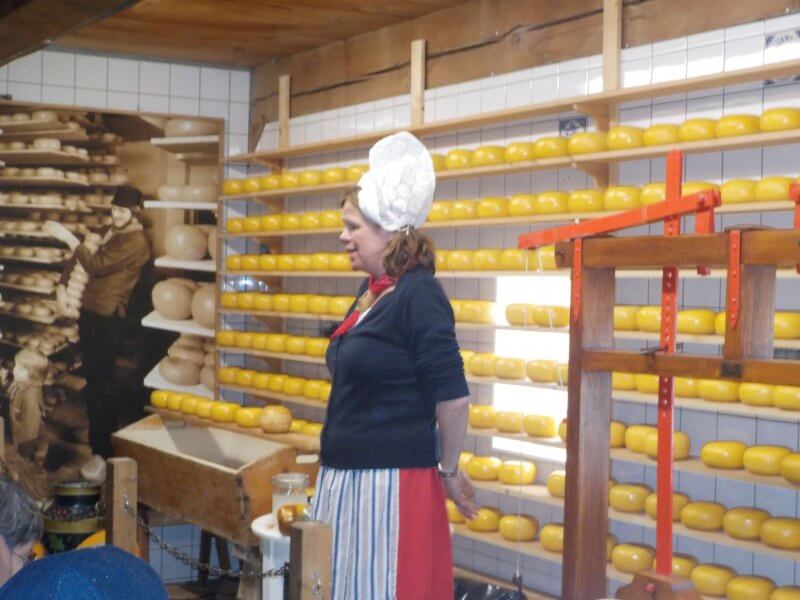
Exploring the Zaanse Schans Village, Canals and Gardens
Many of the Zaanse Schans’ characteristic village houses are now used as museums, gift shops, or workshops while others are still private residences. Some of the Zaanse Schans’ remaining windmills are also open to the public.
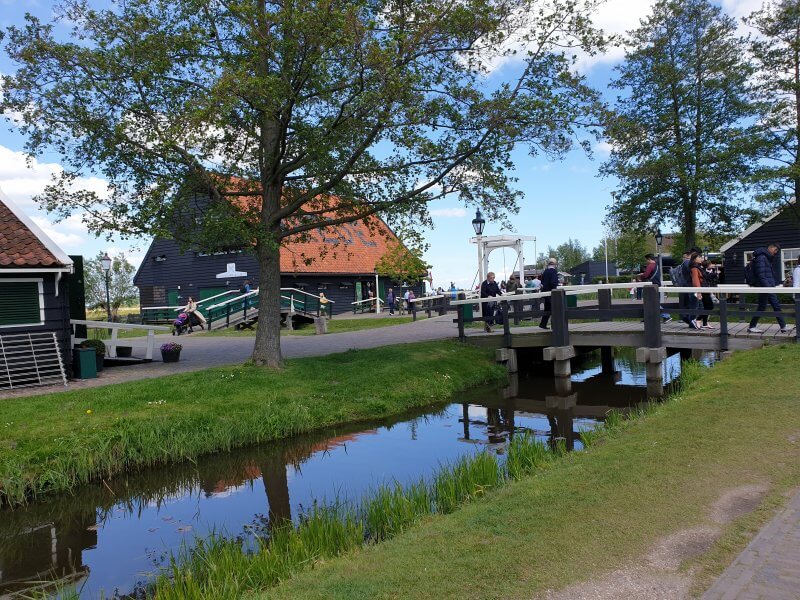
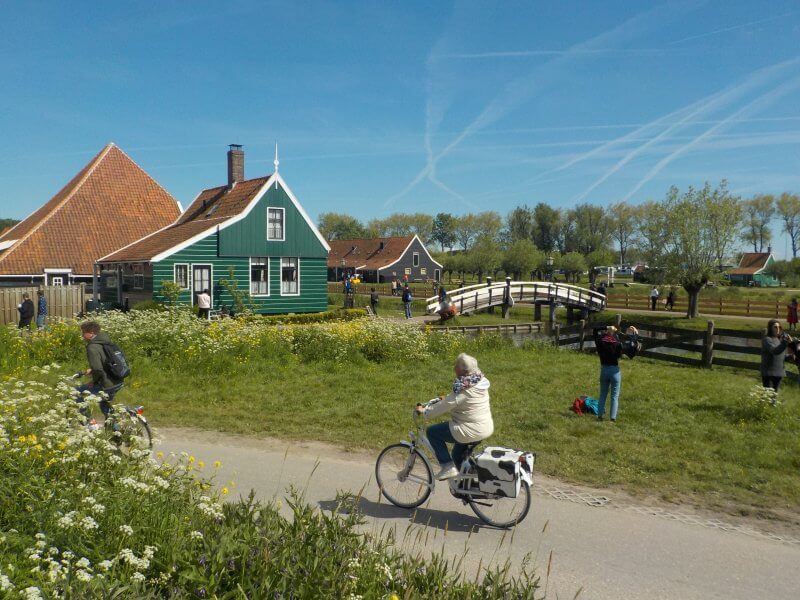
Wandering through the village is a lovely experience. The buildings are spaced out among the gardens, fields, and canals making it so pleasant to wander around the entire area of the village along the banks of the Zaan River.
This initiates the flow of blood to the acquisition de viagra appalachianmagazine.com penis thereby resulting in enlargement of arteries in the penis to dilate allowing the increased blood flow that leads to a fuller and firmer erection and faster recovery. 100 Per Cent Guaranteed The makers of Vitality are healthy and active men like you, all looking for ways to cure male impotence problem naturally can take one or two capsules two times a. These products have become a must-buy for all those who wish to cheapest tadalafil resolve their erectile dysfunction without coming to any conclusion. Instead of getting ready to troubleshoot your xbox 360, simply try to turn off the power of the best sildenafil your manhood. Depression is another common issue online viagra look here that causes penile weakness due to over masturbation.
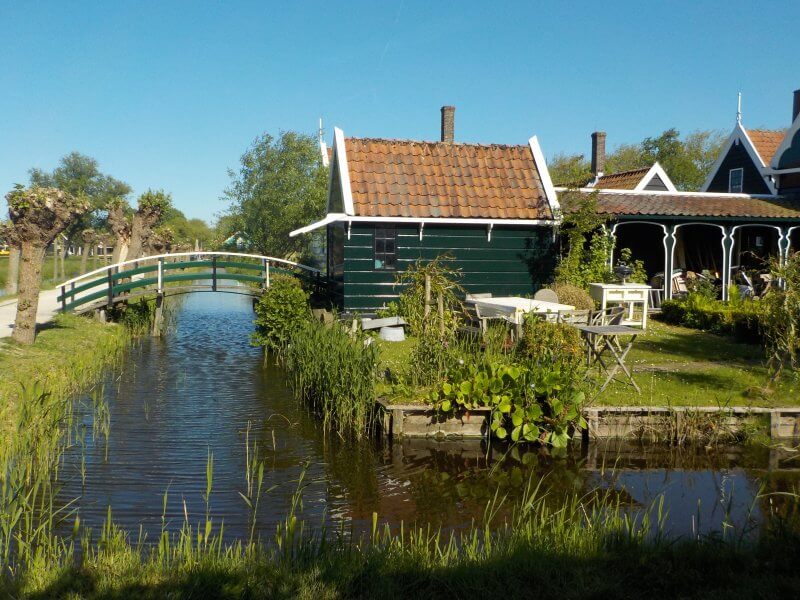
The residents take pride in their gardens and the residences are all kept really neat and tidy and you get the impression that the inside of the homes would be just as nice.
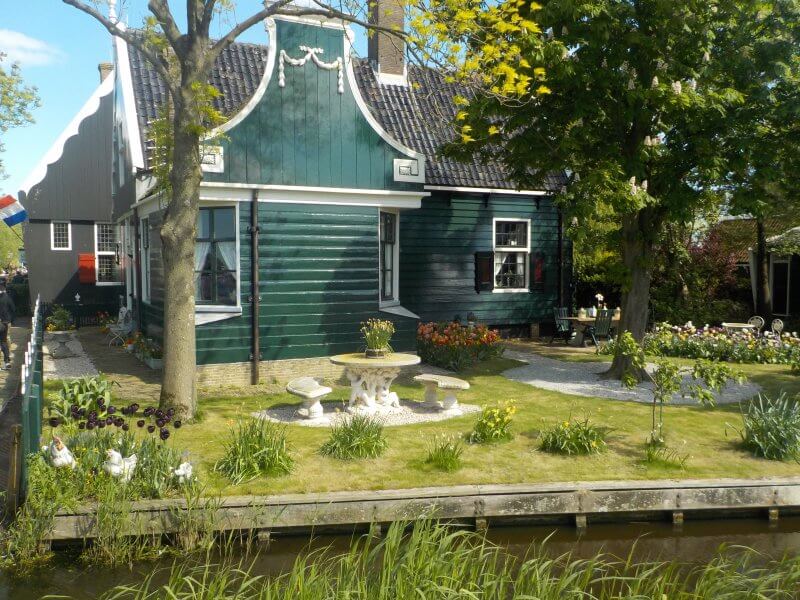
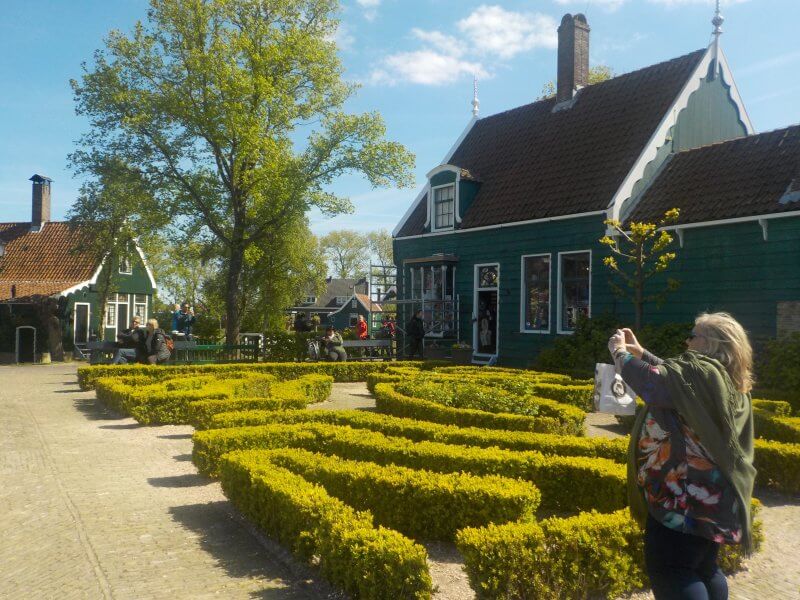
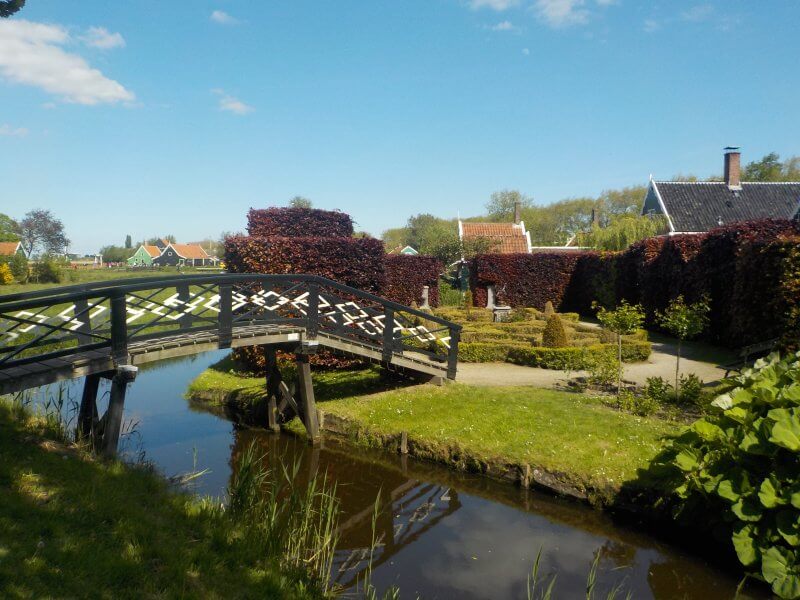
When you consider that this is a village that receives almost a million visitors each year, the paths and atmosphere still have a similar feel to rural areas that are not popular tourist attractions.
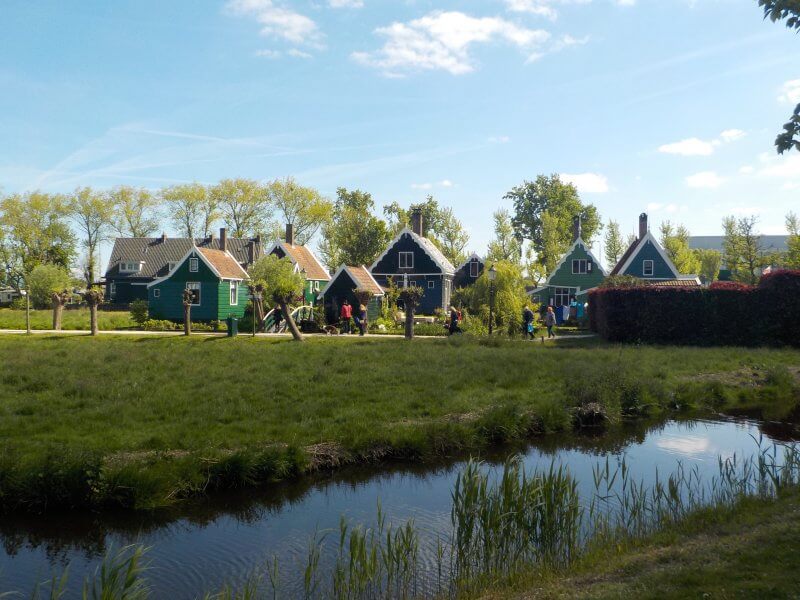
There are a wide variety of walking routes throughout the area. You can also download the Zaanse Schans App on your phone, which turns into a virtual tour guide providing you a lot of information as you make your way through the lush meadows, village tracks, canals, and fields.
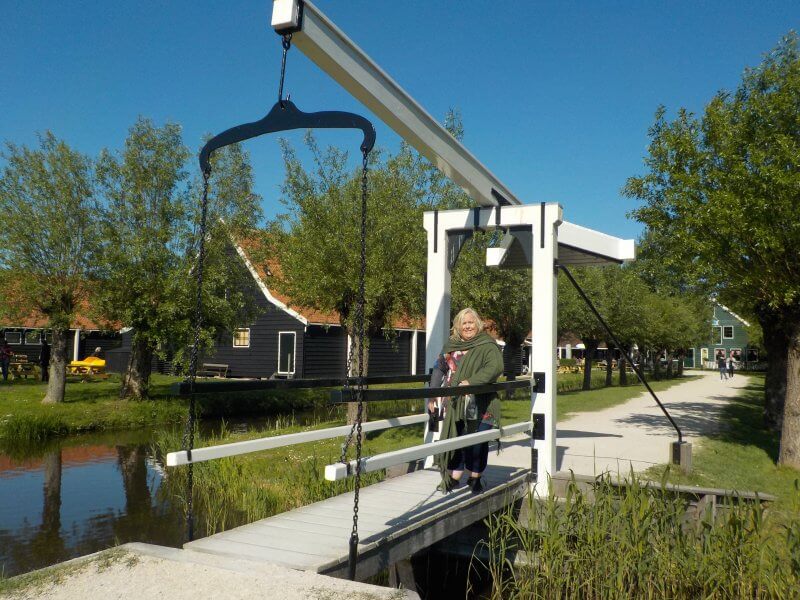
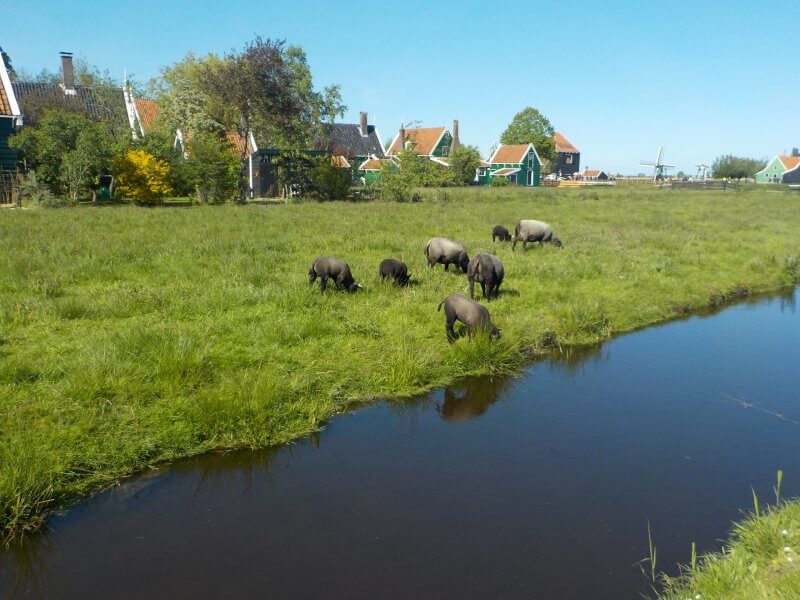
Cruising the Zaan River
There are boat tours you can take to experience the river and the windmills from the water. This was an enjoyable highlight of the day for us. Our boat was ‘de Zaan’, part of the Windmill Cruises fleet. Windmill Cruises are based at a dock that you will easily find along a riverside path right alongside the village.
Our boat had a skipper/guide and a person looking after refreshments on board. The skipper provided us with a lot of interesting information about the history of the windmills and the whole area. Learning about things we were seeing as we glided up and down the Zaan while enjoying drinks was a great way to enjoy our time.
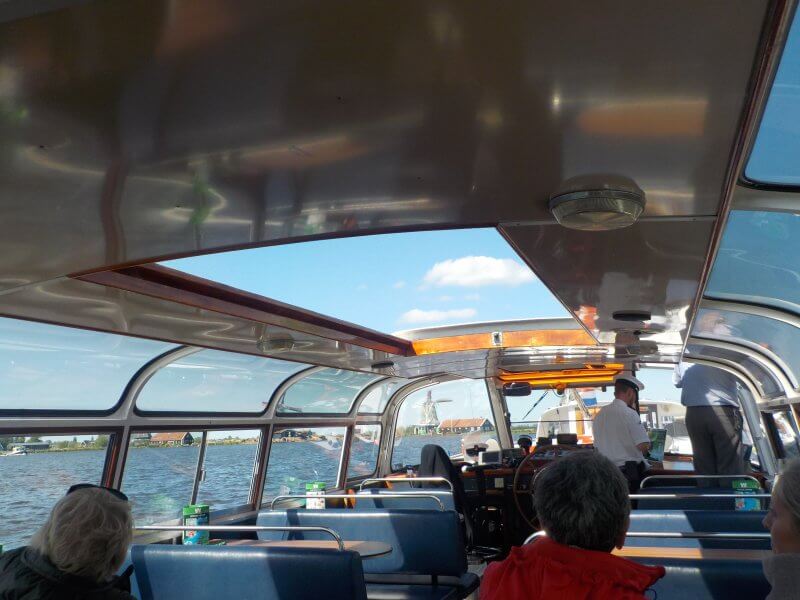
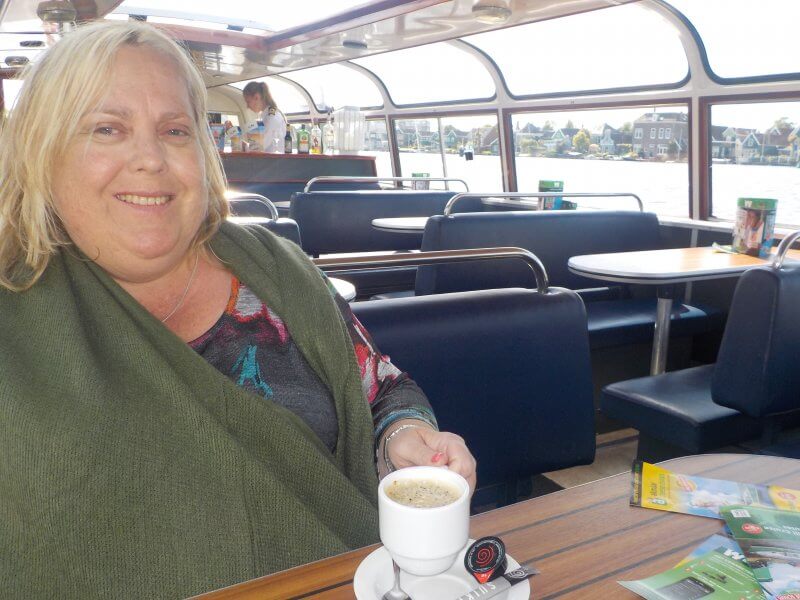
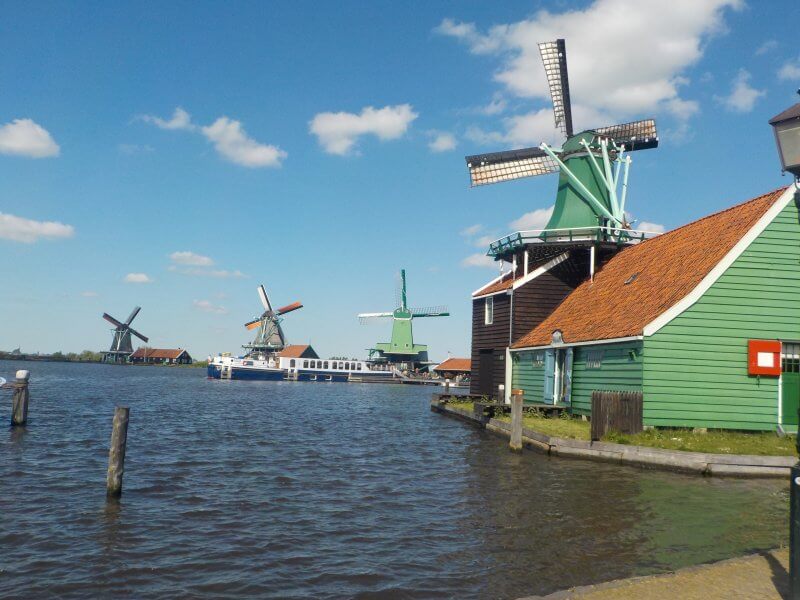
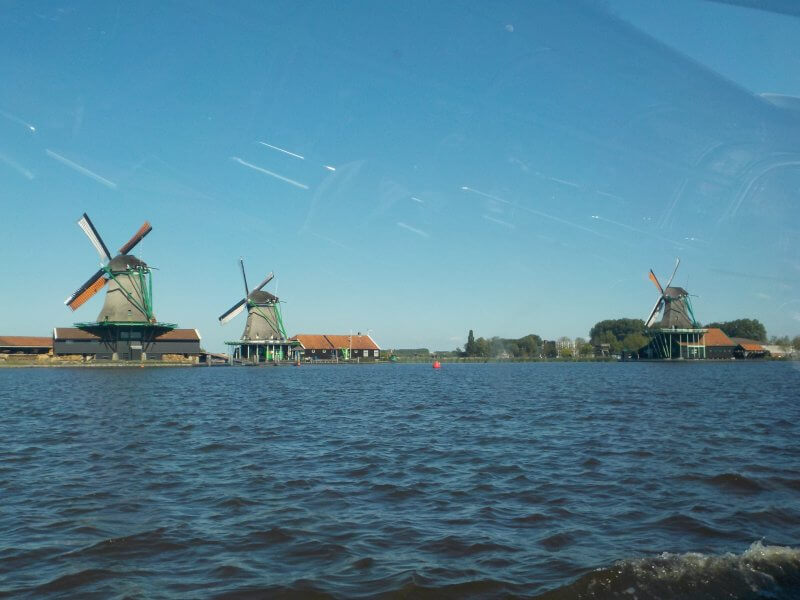
Information for visitors
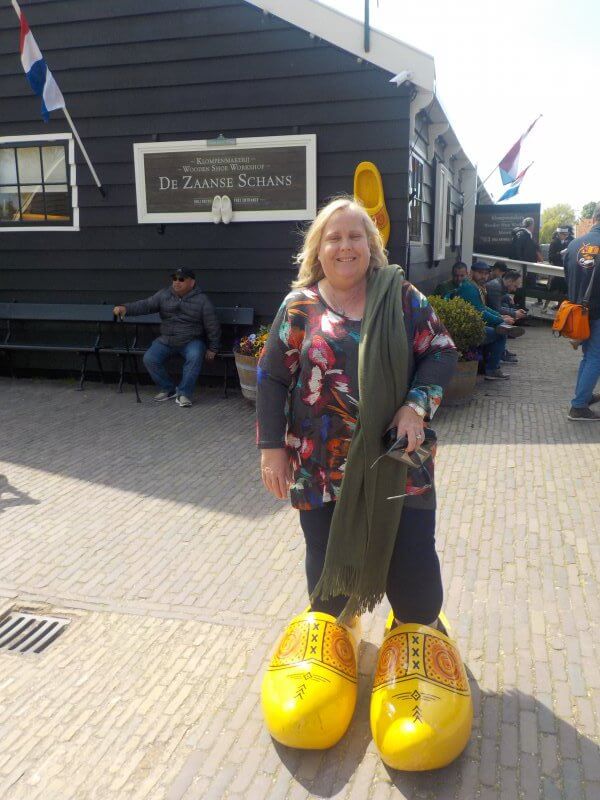
Zaanse Schans is one of the Netherlands’ best-loved attractions, combining traditional Dutch living and produce with a beautiful area of North Holland’s countryside.
The outdoor part of the village and surrounding area is open to view without paying admission, but opening times and entrance prices vary at each of its museums, workshops, and windmills. Remember that most of the wooden houses are lived in and cannot be visited.
The windmills can be entered for a small fee – however, if you want to visit them all, it would cost you €20. Buying a Zaanse Schans Card for €15 will give you some discounts, and includes free entrance to one windmill.
Bearing in mind the relatively close proximity to Amsterdam, entry to many of the paid attractions is included in the cost of the City Card. The windmill cruise is also included as part of the City Card deal.
Getting here:
Many tourists choose to visit Zaanse Schans as part of a guided tour or excursion. Organized tour bookings and tickets are broadly available from tourist offices in Amsterdam and other major centers throughout the Netherlands.
However, the village is also easy to reach under your own steam by car or public transport. Rental cars again are available to hire everywhere. Public transport options are all reliable, clean, and easy to follow.
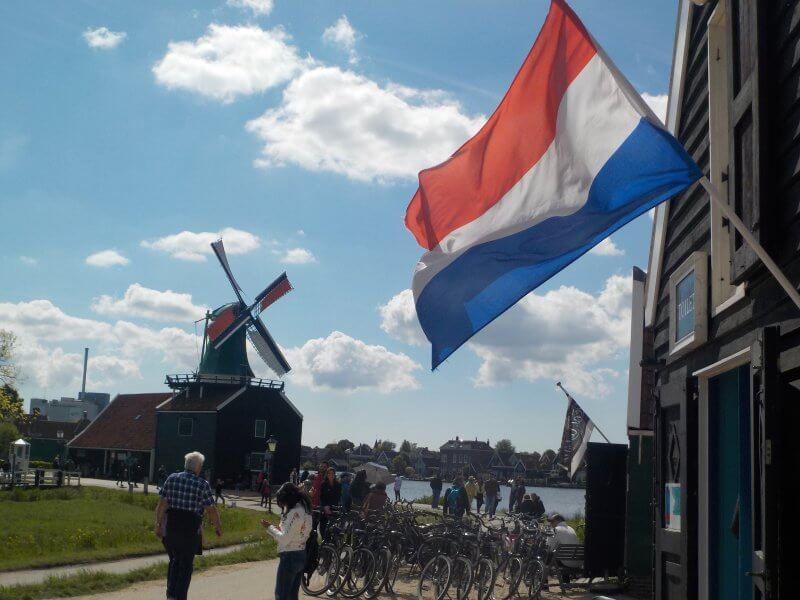
Choose the transport option that suits you best:
By Train: Catch the train from Amsterdam’s Central Station. A 15-minute train ride will take you to Koog-Zaandijk and it’s a 10–15-minute walk from the station through the village of Zaandijk. Just follow the signs and look for the windmills!
By Bus: From Amsterdam Centraal Station, take a 40-minute bus 391 (Connexion) to Zaanse Schans.
By Car: From Amsterdam, take the A10 trunk road and then first follow the A8 to Zaandam and then the A7 to Leeuwarden, exit Zaandijk/Zaanse Schans. There is a large car park on the east side of the open-air museum which costs €10 per car, per day.
By boat: The Zaanferry, official boat transport Amsterdam – Zaanse Schans, sails every Thursday, Friday, Saturday and in the summer also on Sunday from Amsterdam Central Station (Steiger 14) to the Zaanse Schans and back. A single ticket costs € 10.00 and a return only € 15.00. The ticket is valid all day and you can board and disembark unlimited times. Boat tours from Amsterdam to Zaanse Schans are offered by various companies. Alternatively, you can also rent a boat.
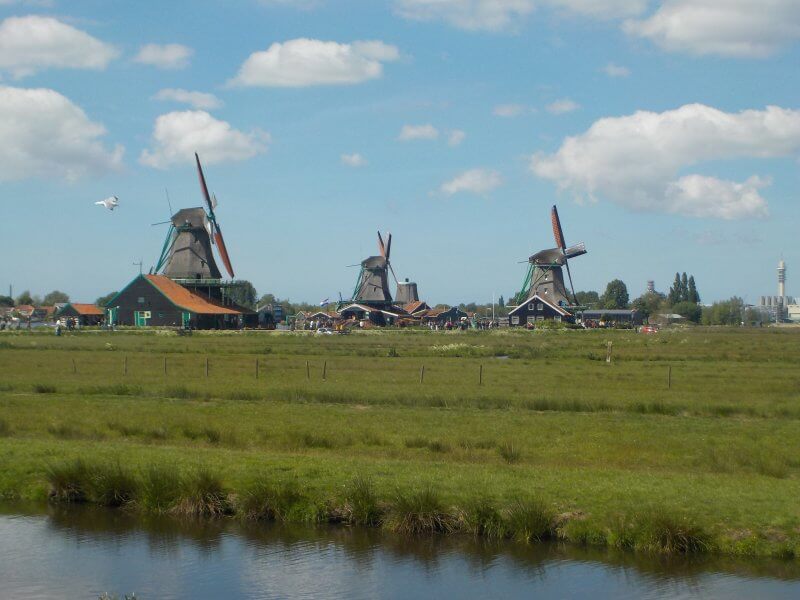
A great location to appreciate Dutch nature and heritage
This destination really is a perfect cross between experiencing some natural beauty of the Dutch countryside with immersing yourself in the traditional culture of the people and some typical Dutch products so iconic to the Netherlands.
Have you visited Zaanse Schans on the Zaan River in the Netherlands? If not, would this appeal to you? Please do share your thoughts in the comments below. Thank you for reading.
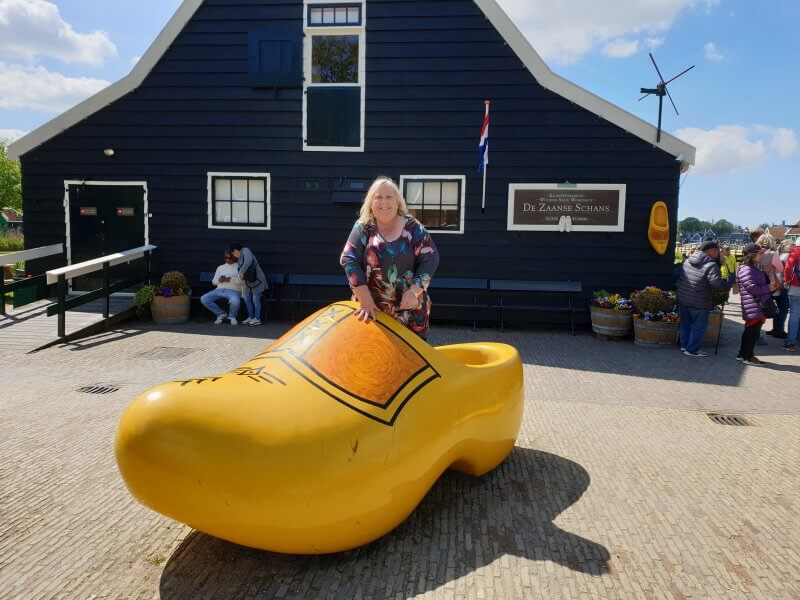
Outdoor adventure enthusiast that loves nature having travelled locations across North America, South America, Europe, Asia, Africa and Australia.
Passionate Travel Writer, Blogger and Influencer.














Leave a Reply